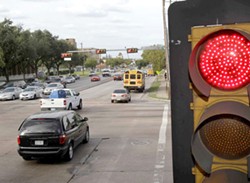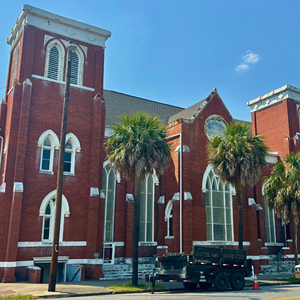MY WIFE’S parents visited from New York last year and they learned an important lesson that is second nature to many of us who live in Savannah: Green does not mean go.
At least not right away.
In our city, when the traffic signal changes to green it’s a reminder to keep your foot on the brake for five or even 10 seconds after the light has changed as cars hurtle through the intersection.
Despite having lived all over the country (My wife was an Air Force brat) they said they’d never seen anything like Savannahians’ relaxed relationship with red lights.
But now the trend may be catching on with young folks nationwide. A new study reveals, “Nearly 50 percent of drivers ages 19-24 reported driving through a light that had just turned red when they could have stopped safely, compared to 36 percent of all drivers.”
This finding comes from the AAA Foundation’s annual Traffic Safety Culture Index, released last week.
The headline of AAA’s press release is “Young Millennials Top List of Worst Behaved Drivers” and it finds 88.4 percent of drivers, ages 19-24, reported speeding, red light running, or texting behind the wheel in the past 30 days.
Folks in my age bracket (40-59) are no angels either, as 75.2 of us admitted to dangerous driving behaviors.
AAA’s latest study comes amid “American carnage,” of a type that was not mentioned in the inaugural address. And this carnage is based in fact: U.S. traffic deaths rose to 35,092 in 2015, an increase of more than 7 percent and the largest single-year increase in 50 years.
Here in Georgia, fatal crashes increased 34 percent between 2014 and 2016.
Distracted driving is appropriately identified as a major contributor to the rising death toll.
“Drivers ages 19-24 were nearly twice as likely as all drivers to report having typed or sent a text message or e-mail while driving (59.3 percent vs. 31.4 percent).” according to the AAA study.
There’s no simple solution to distracted driving. Should the focus be on legislative remedies, law enforcement strategies, or technological measures? It’s about changing culture, too, as the name of AAA’s annual study suggests.
For many young Americans, handheld screens have been their constant companions for most of their lives.
When it comes to reducing speeding, the way forward is clear, it’s all about street design, and the need is critical. AAA reports 46.0 percent of drivers surveyed admitted having driven 10 mph over the speed limit on a residential street in the past 30 days, with 10.5 percent reporting they did so regularly or fairly often.
Young millennials were 1.4 times more likely to speed on residential streets.
Speeding is further encouraged when streets are designed like freeways, with multiple wide lanes. No matter what the posted speed limit or how many “radar hotspots” are announced on local radio stations, people drive at speeds that feel “right” to them.
To use a line I cribbed from a Maryland-based advocacy group’s Twitter account, “Design streets like gun barrels and people will drive like bullets.”
Driving 10 mph over the speed limit on residential streets may not seem like a big deal, until you consider how mortality rates increase with speed. A person hit by a car going 20 mph has a 5 percent risk of death.
People hit by cars travelling 40 mph will die 80 percent of the time.
For children and older people, the numbers are even more grim.
Mounting research confirms using a Complete Streets approach — to make streets safe and accessible for people who ride bikes, walk and use transit — reduces crashes for everyone, including drivers.
On four of Savannah’s “gun barrel” streets (Whitaker, Drayton, Henry and Anderson), which are very much residential — just ask the people who live on them — car crashes have increased every year since 2011, according to data from the Traffic Safety Research and Evaluation Group at the University of Georgia.
Drayton Street, in particular, has seen a dramatic rise from 69 crashes in 2011 to 169 in 2016. Thankfully there have been no fatalities. Yet.
The good news, again, is we know exactly how to reduce crashes. Designing streets to discourage speeding will decrease fatal collisions. Modern bike lanes, pedestrian refuges and other design features can also offer more protection from distracted drivers, be they millennial or middle aged.
For the sake of people who live on these streets and the people who travel them, we should stop chasing the dragon of driver convenience.
We’ve been doing that since early last century and the consequences have been deadly.


























